
Queen of the Demonweb Pits (Q1) is an adventure module for the Dungeons & Dragons roleplaying game written by David Sutherland. The "Q" in the module code is an abbreviation for "queen". The module, a sequel to the D series of modules, was novelized in 2001.

King's Knight is a scrolling shooter video game developed and published by Square for the Nintendo Entertainment System and MSX. The game was released in Japan on September 18, 1986 and in North America in 1989. It was later re-released for the Wii's Virtual Console in Japan on November 27, 2007 and in North America on March 24, 2008. This would be followed by a release on the Virtual Console in Japan on February 4, 2015, for 3DS and July 6, 2016, for Wii U.
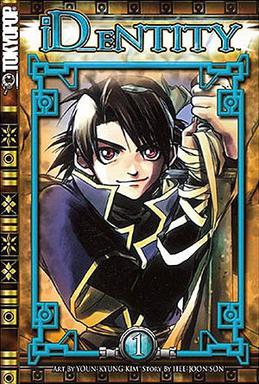
iD_ᴇNTITY or Yureka (유레카) is a Korean manhwa series created by Son Hee-joon in collaboration with Kim Youn-kyung and distributed by Tokyopop in North America. The series centers on the main character Jang-Gun and his friends along with their virtual reality avatars in the computer game world called "Lost Saga". There are 41 volumes right now, twelve of them have been released in the United States and 34 in France.

Wizardry VII: Crusaders of the Dark Savant is a role-playing video game developed and published by Sir-Tech. It is the seventh title in the Wizardry series and is a sequel to Wizardry VI: Bane of the Cosmic Forge. It is also the second entry in the 'Dark Savant' trilogy. The game was originally released in 1992 for DOS. A port for the PlayStation developed by Sony Computer Entertainment was released in 1995 only in Japan. In 1996 it was remade into Wizardry Gold, designed to work on Windows and Macintosh, and distributed by Interplay.
Maou Golvellius is an action role-playing video game developed by Compile and originally released for the Japanese MSX home computer system in 1987. In 1988, Compile released a remake for the MSX2 system, titled Shin Maou Golvellius. This game featured mostly the same graphics as the ones in the Sega Master System version, but the overworld and dungeon layouts are entirely different.
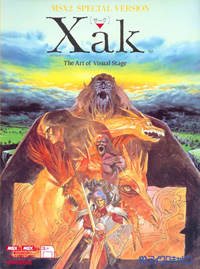
Xak: The Art of Visual Stage (サーク) is a 1989 role-playing video game by Microcabin. The first game in the Xak series, it was originally released for the PC-88 computer system, with subsequent versions being developed for the PC-98, X68000, MSX2, PC Engine, Super Famicom, and mobile phones. The first four versions were re-released for Windows on the online store Project EGG. An English translation of Xak: The Art of Visual Stage was also released in 2007 on the now-defunct retro gaming service WOOMB.net, and became available on Project EGG.
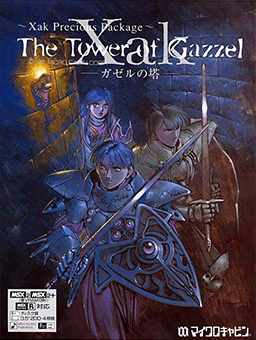
Xak Precious Package: The Tower of Gazzel is a fantasy role-playing video game developed and published by the Japanese software developer Microcabin. The game is a direct sequel to Xak: The Art of Visual Stage and Xak II: The Rising of the Red Moon. While technically being the third installment of the series, The Tower of Gazzel is a sidestory taking place between the events of Xak II and Xak III. The game was released in Japan only.
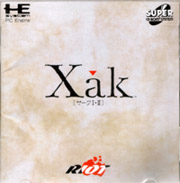
Xak I & II is a re-release of Xak (1989) and Xak II (1990), a fantasy role-playing video game series Xak developed and published by the Japanese software developer Microcabin and Telenet Japan's development team Riot. This set contains both the first two Xak series games back-to-back on one complete Super CD-Rom^2 with enhanced graphics and sound. In a similar style to Ys I & II, also for the PC Engine system, Xak II, the second game in the series picks up immediately as the first game concludes. Xak I & II was a Japanese release only and although the first two Xak games have been translated into English on the MSX2, the PC Engine versions remain untranslated for now.

Fray in Magical Adventure, also known as just Fray (フレイ) and Fray-Xak Epilogue (Gaiden), is a 1990 spin-off "gaiden" (sidestory) game in a role-playing video game series Xak developed and published by the Japanese software developer Microcabin. Even though it is directly connected to the more serious Xak storyline, Fray has a less serious tone and light-hearted comedic approach to telling the story. It was originally released for the MSX2 and was later ported to several different systems, among them MSX Turbo R, PC-98, PC Engine, and Game Gear.

The Tower of Cabin is an unusual spinoff of the fantasy role-playing video game series called Xak by the Japanese developer Microcabin. The Tower of Cabin was released just before Microcabin decided to discontinue the development of Xak III for MSX. The Tower of Cabin was also ported to the PC-98. In this game, the player plays as a new Microcabin employee as they wander the Microcabin headquarters building in Japan with a goal to work with the various lead programmers and developers in making the company more successful. This is very similar to the later Japanese game known as Segagaga (Dreamcast) in which the player runs the entire Sega company as the president of Sega Corporation. This game featured many characters from the Xak series such as Latok, Fray and Pixie. There were two unlockable mini-games in The Tower of Cabin: a short fighting game between Pixie and Fray and a text adventure called Crusader that took place within the Xak universe.
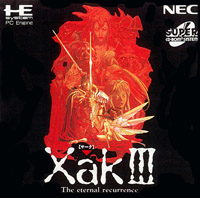
Xak III: The Eternal Recurrence is the final game in a fantasy role-playing video game series called Xak developed and published by the Japanese software developers Microcabin and NEC. Xak III was originally under development to be released for the MSX2 but shortly after Xak: The Tower of Gazzel was released, the development project was halted. After several years the project was continued and finally released simultaneously for the PC-98 and FM Towns. A year later, Xak III was released for the PC Engine CD; this version has since been unofficially translated into English.
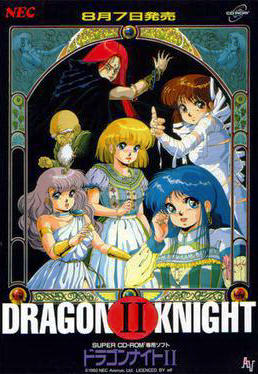
Dragon Knight II (ドラゴンナイトII) is a fantasy-themed eroge role-playing video game in the Dragon Knight franchise that was originally developed and published by ELF Corporation in 1990-1991 only in Japan as the first sequel to the original Dragon Knight game from 1989. The game is an erotic dungeon crawler in which a young warrior Takeru fights to lift a witch's curse that has turned girls into monsters.

Dragons of Despair is the first in a series of 16 Dragonlance adventures published by TSR, Inc. (TSR) between 1984 and 1988. It is the start of the first major story arc in the Dragonlance series of Dungeons & Dragons (D&D) role-playing game modules, a series of ready-to-play adventures for use by Dungeon Masters in the game. This series provides a game version of the original Dragonlance storyline later told in the Dragonlance Chronicles trilogy of novels. This module corresponds to the events told in the first half of the novel Dragons of Autumn Twilight by Margaret Weis and Tracy Hickman. Its module code is DL1, which is used to designate it as the first part of the Dragonlance adventure series.

Last Armageddon is a 1988 post-apocalyptic role-playing video game for the NEC PC-8801, MSX, Sharp X68000, MS-DOS, PC Engine CD-ROM², and Nintendo Family Computer. The game was exclusively in the Japanese language until an English translation patch was created for the Nintendo Famicom.

Diablo is an action role-playing dungeon crawler video game series developed by Blizzard North and continued by Blizzard Entertainment after the North studio shut down in 2005. The series is made up of four core games: Diablo, Diablo II, Diablo III, and Diablo IV. Expansions include the third-party published Hellfire, which follows the first game; Lord of Destruction, published by Blizzard and released after the second game; Reaper of Souls, which follows the third game; and the upcoming Vessel of Hatred, which will follow the fourth game. Additional content is provided through story elements explored in other types of media forms.

King of the Monsters 2 is a fighting/wrestling game released on May 5, 1992 by SNK. It is a sequel to the 1991 game King of the Monsters. In this game three of the previous game's surviving monsters return and battle across the Globe against giant alien monsters that threaten the Earth. The game was later ported to the Super NES and Sega Genesis by Takara.

Zwei: The Ilvard Insurrection, known in Japan as Zwei II, is a 2008 action role-playing game developed by Nihon Falcom for Windows, which was released as a direct sequel to Zwei: The Arges Adventure. A re-release with additional features was released in Japan in December 2009 and in English by Xseed Games in October 2017.
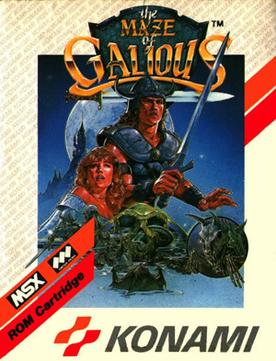
The Maze of Galious is a 1987 platform-adventure video game developed and published by Konami for the MSX home computer. A reworked conversion was released for the Family Computer. Both versions were re-released digitally for Microsoft Windows. The second entry in the Knightmare trilogy, it follows the respective hero and former damsel in distress of the previous game, Popolon and Aphrodite, as they embark on a journey through Castle Greek to free their unborn child Pampas from the evil priest Galious. The player explores each map in search for items and power-ups to progress, while also fighting enemies and bosses.

Undeadline is a 1989 vertically scrolling shooter video game developed and originally published by T&E Soft for the MSX2 and MSX2+ home computers. It was later ported to the X68000 computer and Sega Mega Drive, published by Palsoft, followed by digital re-releases for Microsoft Windows. Both the MSX2 and X68000 versions also received physical re-releases by Japanese retailer BEEP. It follows a group of characters in rescue of queen Althea from Zidane, a kingdom surrounded by barriers connected with the demon world, whose monsters have overflowed it. Controlling either a fighter, wizard, or ninja, the player can choose from six stages and play them in any order, fighting against waves of enemies and bosses, while defending or avoiding collision with their projectiles and other obstacles.
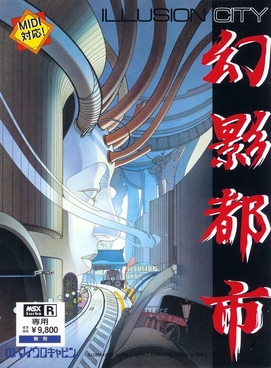
Illusion City is a role-playing video game originally developed and published by Microcabin for the MSX Turbo R home computer. It was later ported to PC-88 and PC-98 computers, FM Towns, X68000, and Sega Mega-CD. The story takes place in the 21st century after Hong Kong was devastated by a demonic attack, before the crisis was isolated and the region was reformed under new order by SIVA corporation. The game follows demon hunter Tianren, gathering information in order to unravel the mystery surrounding the demonic beings and SIVA corporation. Gameplay features a growing party led by Tianren navigating the city, talking with non-playable characters, exploring complex areas, and taking part in turn-based battles against enemies.



















